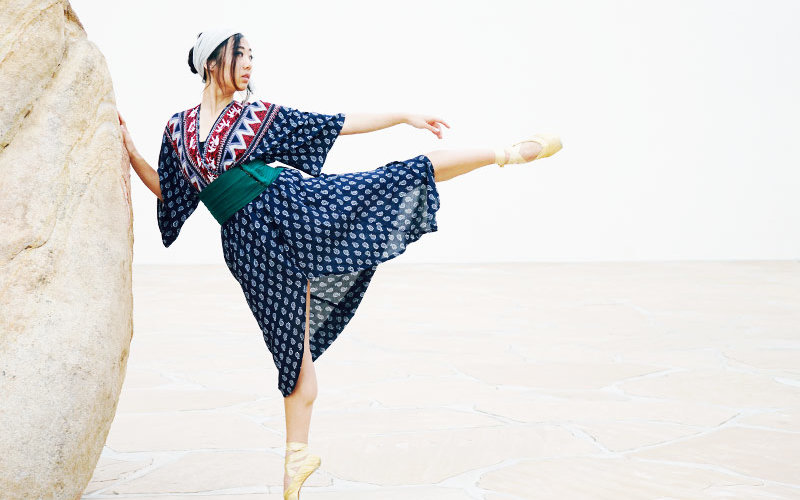
The thrill of a challenge and the chance to explore his Japanese heritage led Kimo Furumoto to say “yes” to Lois Ellyn, artistic director of the Nouveau Chamber Ballet, when she asked for his help composing music for a special dance.
“She came to me and asked, ‘I have a story that I don’t have music for. Would you be willing and interested in writing the music so I can create a new ballet?’ And I was immediately fascinated with the opportunity,” says the conductor and associate professor of music.
The story is based on a children’s illustrated book, “The Tale of the Mandarin Ducks,” by Katherine Paterson. “It’s an original story but almost with the intention to be told as a traditional Japanese tale,” he explains.
His spring 2016 sabbatical to conduct research and compose the ballet took him to Tokyo, where he attended performances of traditional Japanese theater and music. Artistically, he says, his focus is mostly on the interpretation of work that is already written, so this was the other side of the coin — actually creating the music. Luckily, part of his graduate studies were in composition.
“I was able to really formulate ideas of how I could evoke the quality of traditional Japanese music using Western orchestra and instruments,” says Furumoto, who also is the music director and conductor for the Huntington and Rio Hondo symphony orchestras.
“This is a children’s story meant to be told through movement, so the music is specialized in that sense — it supports the story and the movements that tell the story. In setting up a framework for composing, I came up with a series of seven or eight scenes. Each scene would have its own music specifically,” he explains. “And of course, certain themes, melodies or instrumental sounds are associated with a particular character to further delineate them.”
Furumoto also incorporated elements of traditional music in different ways. One was the use of the pentatonic, or five-note, scale, as opposed to the seven-note scale often associated with Western music. He also included the rhythmic elements of Japanese taiko drumming. “The last part of the ballet is an homage to that kind of music — very rhythmic and vivacious.”
The Nouveau Chamber Ballet and the Rio Hondo Symphony Orchestra premiered “The Mandarin Ducks” in April, with Furumoto conducting his own interpretation.
The biggest challenge in this great endeavor? “Getting that first thing down on paper.”